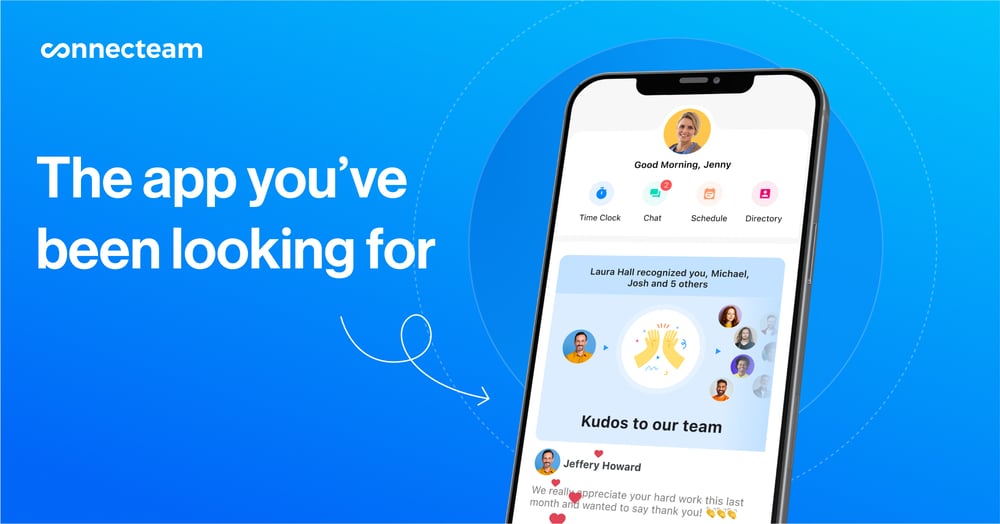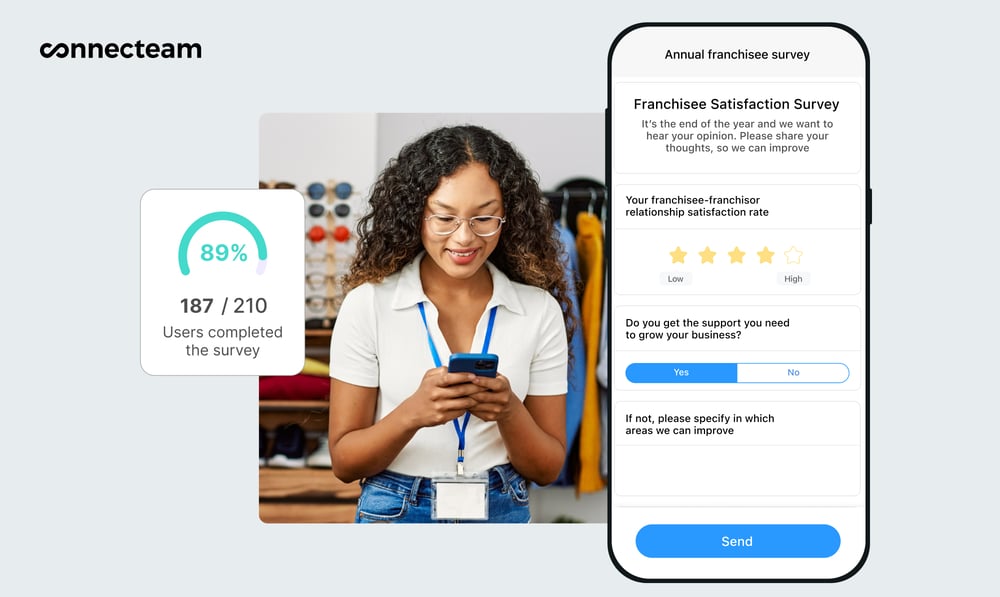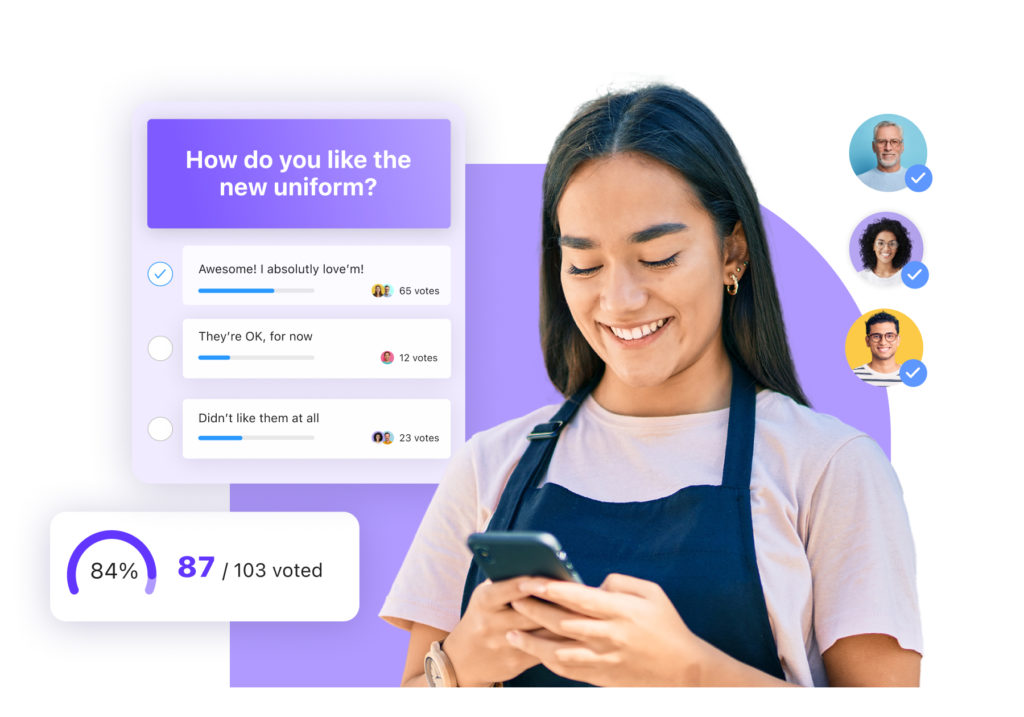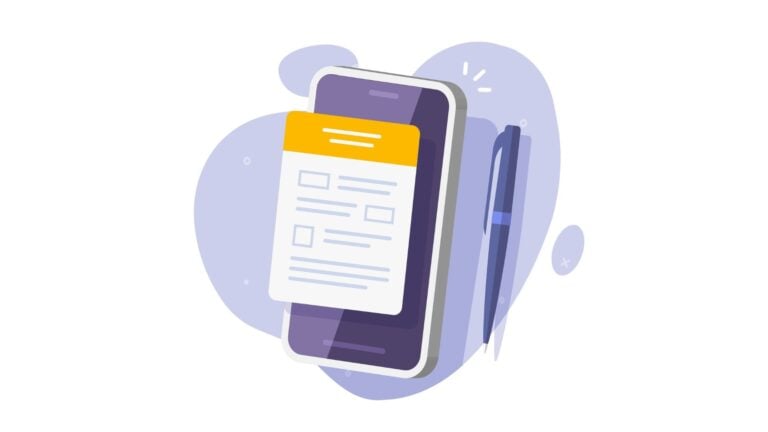Workers who feel valued at work are more engaged and productive. Learn how to run a successful employee recognition survey and key questions to include so you can check the effectiveness of your recognition and feedback programs.
Most companies run employee recognition programs to keep employees engaged and committed at work.
But, a lack of appreciation from managers is still one of the top reasons workers feel disengaged—or worse, leave their jobs.
That’s why it’s vital to measure the effectiveness of your recognition efforts.
An employee recognition survey is a great way to check whether workers are feeling recognized and incentivized at work.
The right questions can show you which of your initiatives are working. Moreover, these surveys will help you identify and address areas for improvement.
In this guide, we tell you everything you need to know to create and run an effective employee recognition survey—including best practices to follow and example questions to include.
Key Takeaways
- Employee recognition surveys help you ensure your recognition efforts are effective. Plus, they let you identify and address areas of concern.
- You can gather feedback on your company’s recognition program, frequency of recognition, culture, and more. You can also ask questions about specific recognition initiatives.
- The best way to conduct your employee recognition survey is to automate it using survey software.
- With Connecteam, you can create, distribute, and analyze your survey quickly and easily.
What Is an Employee Recognition Survey?
An employee recognition survey is a questionnaire used to gather feedback from workers on how appreciated they feel at work.
They help you better understand what motivates your workers and where you can improve. These insights enable you to make meaningful changes to your HR strategy, helping foster a culture of gratitude.
Employee recognition surveys usually consist of 10-20 questions focused on the following topics:
- Workers’ awareness of company reward and recognition practices
- How frequently workers feel recognized or appreciated in their jobs
- Their team and the overall company’s recognition culture
- How they value different types of recognition—e.g. praise, awards, bonuses, etc.
- The impact of recognition on their levels of engagement, productivity, and satisfaction
These surveys should be run on a consistent basis—ideally once or twice per year. This way, you have enough time between surveys to make changes and give workers time to feel the impact of the changes.

Benefits and Challenges of Employee Recognition Surveys
Employee recognition surveys present both benefits and challenges. Let’s break them down.
Benefits
Improve employee engagement, productivity, and retention
Employees who don’t feel recognized for their work are more likely to feel demotivated at work. This in turn reduces engagement levels and even causes some workers to leave the company. Employee recognition surveys help you check workers’ sentiments around recognition. You can identify and address areas of concern before they escalate.
Plus, asking workers for their feedback is also a way of making them feel recognized and valued. It gives them a platform to tell you what forms of recognition are meaningful to them. Implementing their feedback can make them feel heard and improve overall productivity levels in your company.
Did You Know?
You can use Connecteam to reward employees with digital tokens they can redeem for gift cards. This is a great way to keep workers motivated and incentivized to stay productive.
Get started with Connecteam for free today!
Gather feedback from all workers
Employees who work at different times or across different job sites often feel disconnected from management. Employee recognition surveys enable you to hear from all your workers—including those who are dispersed. This way, you can tailor your recognition programs to make them feel as valued as workers who get to interact with you more regularly.
Did You Know?
With Connecteam, you can send workers words of thanks, shout-outs, and more straight to their mobile devices.
Get started with Connecteam for free today!
Gain specific and actionable insights
Other surveys like employee engagement surveys look at employees’ overall sentiment at work and over a range of key areas. When themes emerge, you may need to conduct follow-ups or focus groups to find the problem.
Employee recognition survey questions are more focused. They help gather specific feedback on the company’s recognition efforts.
For instance, you can ask workers for their views on a particular reward program. You can even ask them how often they’re recognized by their managers or coworkers.
Deeper questions like these can help you get to the root of any underlying issues and make amends quickly.
This Might Interest You
Read our full guide on employee engagement surveys. It includes a free survey template and our top tips on how to analyze results.
Measure the effectiveness of your rewards and recognition efforts
Employee recognition surveys can provide you with data on how successful your recognition efforts are.
For instance, say you give employees personalized mementos for 5 years of service, but your recognition survey shows you that workers don’t find this award meaningful.
By learning this kind of information through surveys, you can make changes to your recognition program to ensure employees truly feel valued. In turn, you’ll waste less time and money on efforts that aren’t impactful.
Foster and maintain a strong culture of recognition
Recognition isn’t limited to making workers feel valued. A good culture is one where team members appreciate their peers, juniors, and managers. Employee recognition surveys usually gather feedback on this overall culture of recognition.
With these surveys, you can easily spot areas of concern—for example, workers giving negative feedback about peer recognition on their team. You might address these issues through team-building activities, training sessions, and more.
Did You Know?
You can use Connecteam’s in-app chat to send private messages of praise or thanks to your workers. There’s also a company newsfeed you can use for public shout-outs and announcing employee-of-the-month, years-of-service awards, and more.
Get started with Connecteam for free today!
Challenges
Low participation rates and inauthentic responses
One of the biggest challenges with any employee survey is getting enough workers to participate. In addition to this, even those who do respond aren’t always honest with their answers. This is because employees often fear retaliation for any negative opinions about the company.
Prone to workers’ biases
On the flip side, workers could use an employee recognition survey to make demands about what they want—bonuses, more days off, and more. To inflate the value of a specific initiative, workers may purposely rate all other recognition efforts poorly.
This could happen even if workers actually appreciate those efforts. These biases can lead to invalid and misleading results.
Managing workers’ post-survey expectations
Asking workers for their views on the company’s recognition program can make them feel heard. But, it can also mislead them into believing that all their suggestions will be implemented.
Recognition survey results can give you insights but may not always align with what you can offer at the time. For instance, workers may want a cash bonus, but you may not be able to offer it if it doesn’t align with your strategy or your business’s budget.
This Might Interest You
Learn about 14 effective non-monetary incentives you can add to your recognition program.
Time-consuming process
Planning and running an employee recognition survey requires time and effort. You have to create the survey, distribute it, and remind employees to complete it. Then, you need to gather all the responses, analyze the results, and make changes to your program.
Example Employee Recognition Survey Questions
You can only gain the benefits of using recognition surveys if you ask the right questions. Below, we’ve listed 15 effective questions to help get you started.

Company’s recognition programs
Running recognition programs is pointless if your workers don’t know about them. In some cases, employees know about them but aren’t happy with the initiatives being offered.
These questions aim to check workers’ awareness of recognition programs. They also collect feedback on their satisfaction with the company’s recognition efforts.
In addition, you can ask questions that let workers rank or rate individual reward and recognition practices.
1. Are you aware of the different recognition initiatives offered by the company?
- Yes
- No
2. Do you know where you can learn about the company’s recognition initiatives?
- Yes
- No
3. To what extent are you satisfied with the company’s recognition programs?
- 5 – Very satisfied
- 4 – Satisfied
- 3 – Neutral
- 2 – Dissatisfied
- 1 – Very dissatisfied
4. To what extent are you satisfied with the types of recognition offered? Please mark it with an X.
| Awards | Praise | Shout-outs | Bonuses | Gift cards | |
| Very satisfied | |||||
| Satisfied | |||||
| Neutral | |||||
| Dissatisfied | |||||
| Very dissatisfied |
5. What new incentives would you like to see offered in the company?
Recognition and performance
Deloitte found that companies with recognition programs see 14% higher engagement and performance than those who don’t.
This set of questions aims to understand how workers value recognition and how it links to performance.
You can also ask questions to ensure that workers know what they need to achieve to be recognized—for example, reach certain targets.
6. To what extent do you agree with the following statement? “Recognition plays a significant role in my performance at work.”
- 5 – Strongly agree
- 4 – Agree
- 3 – Neutral
- 2 – Disagree
- 1 – Strongly disagree
7. Do you know what behaviors receive recognition in your company?
- Yes
- No
Recognition from management
Gallup showed that around 25% of workers’ most memorable recognition comes from their managers or other senior leaders. Thus, it’s important to include at least 1 question that helps you understand whether your employees feel valued by their managers.
8. To what extent are you satisfied with the quality of recognition you get from your manager?
- 5 – Very satisfied
- 4 – Satisfied
- 3 – Neutral
- 2 – Dissatisfied
- 1 – Very dissatisfied
Frequency of recognition
Workers should be recognized regularly—ideally weekly—to maintain motivation and engagement levels. However, Gallup found that only a third of US workers felt they received recognition or praise for doing good work in the last 7 days.
It’s important to consistently show appreciation so workers can form a connection between good performance and recognition.
These questions look at how often employees are receiving recognition from their managers. They also gauge how often workers recognize their team members’ contributions.
9. Are you satisfied with how often you receive recognition for your work from your direct manager?
- Yes
- No
10. Are you satisfied with how often you receive recognition for your work from your team members?
- Yes
- No
11. Do you believe you often recognize your team members for their contributions?
- Yes
- No
12. How often would you like to be recognized for your work?
- Once a week
- Once a month
- Once a quarter
- Once every 6 months
- Annually
- Other
- Please specify: __________
Culture of recognition
These questions speak to the company’s overall culture when it comes to recognition.
You can learn if workers feel workers receive recognition fairly and based only on merit. You can also find out how satisfied employees are with recognition overall and whether they feel your company is a good place to work based on recognition initiatives.
13. Do you believe the company’s recognition culture is fair and impartial?
- Yes
- No
Additional comments: __________
14. How likely are you to recommend the company as a great place to work based on its recognition practices?
- 5 – Very likely
- 4 – Likely
- 3 – Neutral
- 2 – Unlikely
- 1 – Very unlikely
15. Are there any specific suggestions or improvements you would recommend regarding recognition programs/initiatives?
Best Practices for Running a Successful Employee Recognition Survey
Keep the survey short and focused
Employees are more likely to participate in surveys that are short and take less time to complete. Limit your survey to a maximum of 20 questions to encourage a higher response rate.
With a limited number of questions to ask, carefully consider what aspects of your recognition program you want feedback on. You could ask general questions about the recognition culture in your company. Or, you could also make it more specific. For instance, you might ask about a recent rewards or recognition initiative to test its effectiveness.
Consult with your HR team, managers, and company leaders to get a better understanding of what topics to cover.
Pro Tip
You can also anonymize surveys to encourage more participation and honest feedback. Read our guide on creating anonymous surveys.
Gather quantitative and qualitative feedback
Use a mix of question formats to gather both quantitative and qualitative data.
Yes/no, ratings, and multiple-choice questions help you identify themes and trends in your survey results. Meanwhile, open-ended questions bring additional context and perspective to make sense of your findings.
For example, you may find that all workers from a certain team have rated the company’s recognition efforts poorly. Additional comments might indicate what the underlying issue is—for instance, a manager who doesn’t adequately recognize good work. You can address the root of the issue before it damages productivity and retention levels.
Make it user-friendly
Ensure that your survey is easy to read and navigate. Stick to a simple font such as Arial or Verdana. Additionally, use a font that’s at least size 12 so employees can read questions clearly.
It’s also important to use simple language and avoid too many technical terms. This way, workers can fully understand the questions they’re answering.
Additionally, clarify how workers are meant to respond to questions. For example, if it’s multiple-choice, you can ask them to mark only one answer with an X. This way, there’s less room for mistakes or misunderstandings.
Did You Know?
You can announce a new survey using Connecteam’s company newsfeed feature. If you’re targeting a smaller group, use the in-app chat and create a group message to announce the survey to the relevant workers.
Get started with Connecteam for free today!
Format it to reduce bias
There are ways to format your survey to reduce bias when workers are responding. Avoid leading questions such as, “How happy are you with the company’s great recognition program?” These are likely to push workers to answer only positively.
Additionally, you should also avoid grouping questions together or using section headings. In our example list, we’ve used headings to explain the purpose of the questions. However, on your actual survey, grouping questions can lead to employees answering all questions under one heading in the same way.
For instance, they may be happy with the recognition they get from their manager but unhappy with how they’re valued by peers. If you ask them about their satisfaction with managers and peers under a common heading, they may rate both in the same way. Again, this makes it harder to get insights that will help you make meaningful changes.
Use technology to automate the process
Conducting employee surveys can take a lot of time and effort. Companies that run surveys using paper copies or Excel spreadsheets need to find a way to keep track of responses and gather all their data in one place to analyze results.
Using specialized survey software can simplify the entire process. Good survey apps let you create custom surveys quickly and distribute them to workers digitally.
These apps also send reminders to employees to complete their surveys and let you track progress in real time. After responses are finished, you can use the reporting tools to find themes and trends and gather other insights.

How Connecteam Can Help You Run Your Employee Recognition Surveys
Connecteam is the best all-in-one employee survey tool.
With Connecteam, you can create your recognition surveys in minutes using one of the templates. Or, you can create it from scratch with your own custom questions.
Connecteam supports different question types such as yes/no, ratings, multiple-choice, open-ended, and more. Plus, your survey is auto-saved in draft mode until you’re ready to publish it.
Employees are notified directly on their mobile devices when a new survey is published. They can access and complete their survey from the mobile app anytime, from anywhere.
Plus, Connecteam sends auto-reminders for workers to complete the survey. That said, you can also track progress and completion statuses in real time and send workers push notifications to remind them. In this way, Connecteam helps increase the response rates for your survey.
Once responses are in, you can view the results directly within the app itself. This eliminates the need to collate data into a spreadsheet to analyze it.
Finally, Connecteam lets you run live polls to gather votes and suggestions in real time. You can use this feature to gather quick opinions on your recognition programs when you’re not conducting a full survey.
Pro Tip
Check out our guide to the Best Live Polling Apps for easy ways to engage your audience and capture feedback on the spot.
Conclusion
An employee recognition survey is a great tool to gather feedback on your company’s recognition efforts. It helps you understand what motivates your workers and how you can improve your recognition strategy. You can also ask targeted questions to learn workers’ opinions on specific recognition initiatives. These surveys leave you with powerful insights that you can use to make meaningful changes to your company’s culture and working practices.
However, running surveys can be time-consuming. That’s why you should automate your survey process with an app like Connecteam. Our platform offers features that let you create and publish your survey easily. You can also track progress in real time and view results right from within the app.
Get started with Connecteam for free today!
FAQs
What are some ways to recognize employees for their work?
You can recognize employees by offering praise and gratitude. Some companies even give years-of-service and employee-of-the-month awards. Additionally, monetary rewards—such as cash bonuses, gift cards, and other perks—also help keep employees motivated to do a good job.
What should I look for in an employee survey app?
Look for an app like Connecteam that lets you create a survey in minutes using a template or custom questions. The app should enable you to include questions in multiple formats, like yes/no, ratings, multiple-choice, and open-ended questions. You should also look for the ability to track progress in real time, send workers reminders to complete their survey, and analyze results within the app itself.
Connecteam has all these features and more, making it the perfect solution for your employee survey needs!




